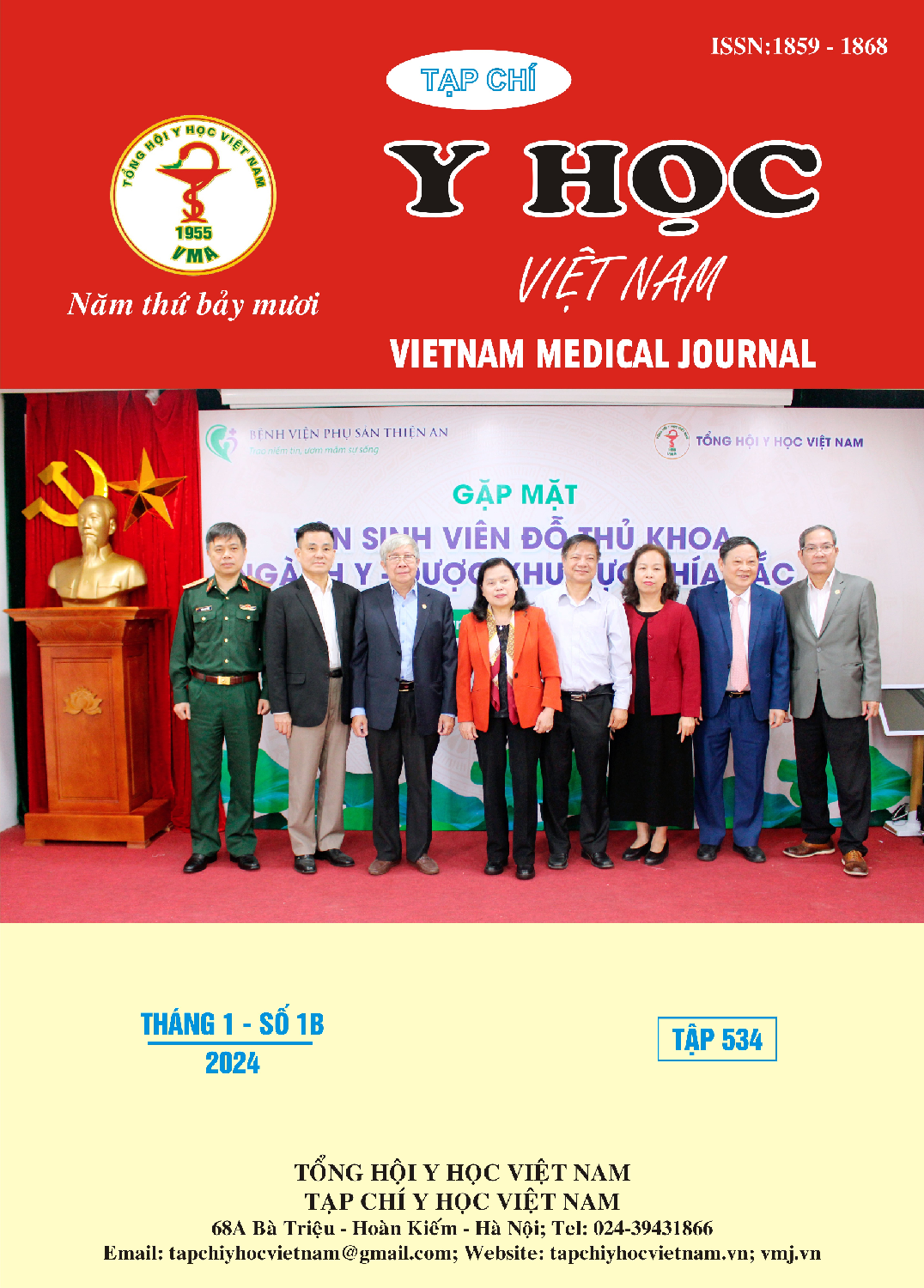HEART FAILURE MANAGEMENT ACCORDING TO EUROPEAN SOCIETY OF CARDIOLOGY’S 2021 GUIDELINE ON VARIOUS LEFT VENTRICULAR EJECTION FRACTION LEVELS
Main Article Content
Abstract
Introduction: The medical therapy of heart failure in patients with different levels of ejection fraction has been more extensively updated in recent heart failure management guidelines. However, in Vietnam, there have not been many studies examining the usage rates of heart failure treatment drug classes in subgroups with different ejection fractions, especially the sodium-glucose co-transporter 2 inhibitor (SGLT2i) drug class. Objective: To identify the proportion of patient treated with heart failure treatment drug classes according to the European Society of Cardiology’s 2021 guideline on different levels of ejection fraction. Subjects: Patients diagnosed with heart failure at the Department of Cardiology, Cho Ray Hospital from January 2022 to December 2022. Study design: Cross-sectional retrospective study description. Results: The study observed 342 heart failure patients with a median age of 65 (range 54-72), with a male predominance (55.0%). The distribution of heart failure patients into reduced ejection fraction (EF), mildly reduced EF, and preserved EF was 70.8%, 13.2%, and 16.1%, respectively. The most common comorbidities were coronary artery disease (79.8%), hypertension (46.2%), and type 2 diabetes mellitus (32.2%). Coronary artery disease was predominant in the heart failure with reduced EF group, while atrial fibrillation was prevalent in the heart failure with preserved EF group (p<0.05). In the heart failure with reduced EF subgroup, the proportion of patients treated with Renin–Angiotensin–Aldosterone System (RAAS) inhibitors, mineralocorticoid receptor antagonists (MRA), beta-blockers, and sodium-glucose co-transporter 2 inhibitors (SGLT2i) was 83.9%, 74.8%, 52.1%, and 37.6%, respectively. Notably, only 19.8% of patients were using all four main drug classes, while 93.8% were using at least one of the four main drugs. The usage of angiotensin receptor neprilysin inhibitor (ARNI) (38.8%) was higher in heart failure with reduced EF compared to angiotensin-converting enzyme inhibitors (ACEI) and angiotensin receptor blockers (ARBs). In the heart failure with mildly reduced EF subgroup, RAAS inhibitors were most frequently used (82.2%), with SGLT2i being the least utilized (20.0%). In the heart failure with preserved EF subgroup, RAAS inhibitors and MRA were the most commonly used (54.6%), while SGLT2i had the lowest usage (10.9%). Conclusion: The proportion of heart failure patients with reduced ejection fraction using all four main drug classes is still low. The class of drugs inhibiting the Renin-Angiotensin-Aldosterone System (RAAS) is most commonly used across the heart failure subgroups, while the usage rate of sodium-glucose co-transporter 2 inhibitors (SGLT2i) remains low in these subgroups.
Article Details
References
2. Vaduganathan M, Fonarow GC, Greene SJ, et al. Contemporary Treatment Patterns and Clinical Outcomes of Comorbid Diabetes Mellitus and HFrEF: The CHAMP-HF Registry. JACC Heart failure. Jun 2020;8(6): 469-480. doi:10.1016/ j.jchf.2019.12.015
3. Greene SJ, Butler J, Albert NM, et al. Medical Therapy for Heart Failure With Reduced Ejection Fraction: The CHAMP-HF Registry. Journal of the American College of Cardiology. Jul 24 2018; 72(4): 351-366. doi:10.1016/ j.jacc.2018. 04.070
4. Brunner-La Rocca HP, Linssen GC, Smeele FJ, et al. Contemporary Drug Treatment of Chronic Heart Failure With Reduced Ejection Fraction: The CHECK-HF Registry. JACC Heart failure. Jan 2019;7(1):13-21. doi:10.1016/ j.jchf. 2018.10.010
5. Teng TK, Tromp J, Tay WT, et al. Prescribing patterns of evidence-based heart failure pharmacotherapy and outcomes in the ASIAN-HF registry: a cohort study. The Lancet Global health. Sep 2018;6(9):e1008-e1018. doi:10.1016/s2214-109x (18)30306-1
6. Koh AS, Tay WT, Teng THK, et al. A comprehensive population-based characterization of heart failure with mid-range ejection fraction. European journal of heart failure. 2017/12/01 2017;19(12):1624-1634. doi:https://doi.org/10.1002/ejhf.945
7. Nguyễn Ngọc Thanh Vân, Nguyễn Đinh Quốc Anh, Hoàng Văn Sỹ, Châu Ngọc Hoa. Khảo sát điều trị suy tim theo khuyến cáo của Hội Tim châu Âu 2016. Tạp chí Y học thành phố Hồ Chí Minh. 2021;25(2):35-41.
8. Thái Trường Nhả, Trần Trọng Quốc Trưởng, Điêu Thanh Hùng. Khảo sát sử dụng thuốc trong điều trị suy tim phân suất tống máu giảm tại bệnh viện tim mạch An Giang. Bệnh viện tim mạch An Giang. http://benhvientimmachangiang. vn/DesktopModules/NEWS/DinhKem/1494_16.-TMLH--Ks-Sd-thuoc-DT-suy-tim-PS-tong-mau-giam.pdf
9. Pierce JB, Vaduganathan M, Fonarow GC, et al. Contemporary Use of Sodium-Glucose Cotransporter-2 Inhibitor Therapy Among Patients Hospitalized for Heart Failure With Reduced Ejection Fraction in the US: The Get With The Guidelines–Heart Failure Registry. JAMA Cardiology. 2023;8(7): 652-661. doi:10.1001/ jamacardio.2023.1266


